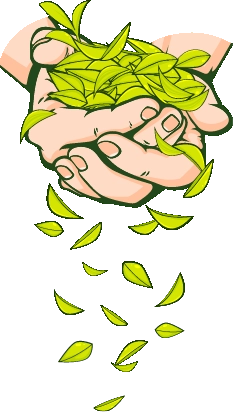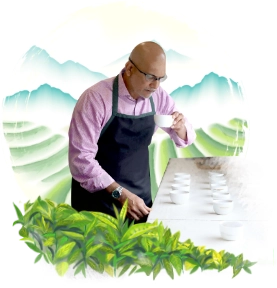It’s Always Tea-Time… And there is a tea for every time of the day!
“It’s always tea-time,” remarks the Mad Hatter to Alice in one of the most memorable chapters – A Mad Tea Party. But fortunately for all of us, it’s not always six o’ clock, and we can enjoy our tea any time we like.
And there is a tea for every time : from morning breakfasts blends to light afternoons teas. And there is a wide array to suit everyone – from English Breakfast to Earl Grey to Oolong.
Join us we take you down the rabbit hole to the tea wonderland of breakfast blends and afternoon teas. The Mad Hatter’s Tea Party has started!
Morning Teas
The first cup of tea in the morning is to perk you and energize you. It needs to be strong and full-bodied to shake off the lingering sleepiness. It needs to be invigorating and robust to set up for the day.
The top choices for morning teas without a doubt breakfast blends. Of these, the most loved ones are :
English Breakfast
Ironically, the iconic tea associated with the quintessential Englishman’s breakfast, has its origins in America! The first tea to come to America was Chinese tea – both black and green. The original colonists settled in America started adding black and oolong teas – the Pekoes and the Pouchongs – to a base of Congou (Chinese Black Tea), for a cup of strong, dark tea. This was probably the first English Breakfast blend.
And then, the opium wars started – the supply of Chinese Teas started dwindling rapidly. Around the same time, teas from Assam in India started coming to the market. Driven by compulsion, the traders started blending the strong Assam Teas to Chinese teas. In a few years, teas from Ceylon (Sri Lanka) were also started entering the markets, and traders found these to be stronger than Assam teas. The English Breakfast blend started to have a higher percentage of Sri Lankan black teas.
By the end of the nineteenth century, the English Breakfast blend had predominantly Sri Lankan, Assam, Kenyan and a small percentage of the Chinese Black Tea – Keemun. The robust and full-bodied English Breakfast teas was an ideal tea to accompany the rich and hearty English Breakfast of beans, bacon, toast and eggs!
It is said that by the end of the nineteenth century, Queen Victoria first tasted the blend during her visit to the Balmoral Castle – her Scottish residence. She loved the tea so much that she carried it with her to London, and since then, it became the popular “english” breakfast tea. So, the English Breakfast is not so English after all – it is both American and Scottish!
Irish Breakfast
Irish Breakfast blend is a more robust and maltier version of the English Breakfast. It is a heavily predominant Assam black tea blend. Over the years, Sri Lankan black teas have also been added to the blend, as have some African black teas, particularly from Kenya and Rwanda. However, the core and the heart of Irish Breakfast tea remains a strong, malty, full-bodied Assam black tea.
As it is a strong, black tea, Irish Breakfast is generally had with a good amount of milk and sugar.
One clear difference between the English Breakfast and Irish Breakfast is the Chinese Black tea – and therefore, an Irish Breakfast tea will be stronger than English Breakfast, without the smokiness of the Lapsang Souchong.
Scottish Breakfast
Of all the three popular breakfast teas in the UK, Scottish Breakfast tea is considered to be strongest. It has a high percentage of strongest black teas from Assam, Kenya and Sri Lanka. This blend also has a smoky
Afternoon Teas
Afternoon teas are generally lighter than breakfast teas. Usually had with nimble accompaniments like sandwiches, scones and cakes, the lighter afternoon teas are meant to complement the taste of these light eats.
Some of the top choices for afternoon teas are :
Earl Grey
Earl Grey is usually a light, mellow black tea infused with the essence of bergamot oil. The fresh citrusy aroma of bergamot oil creates a perfect foil for the astringent black tea. Earl Grey tea can be enjoyed both with milk and sugar, or with a slice of lemon and honey.
Although Earl Grey tea is generally a black tea, today there are many versions and variations of it : from Green Earl Grey to White Earl Grey to Oolong Earl Grey to even Rooibos Earl Grey.
The world of Earl Grey teas includes milder version called Lady Grey with peels of oranges and lemon. And then there is the floral French Earl Grey that has blue cornflower petals, and the Russian Earl Grey with lemongrass. Recent addition to the Earl Grey world include Masala Chai Earl Grey, Spiced Earl Grey and even a Mint Earl Grey.
Old Stinky
Count on the inimitable British dry humour to come up with something like Old Stinky! Earl Grey tea is also sometimes called Old Stinky in England due to its bergamot flavour and the picture of Charles Grey, the Second Earl of Grey, that is so often printed on the packs of Earl Grey Tea of a famous brand.
London Fog
A very uniquely English hot beverage not many people know about is called the London Fog. It is classic Earl Grey tea with steamed milk and a dash of vanilla syrup.
Chamomile Tea
Though not strictly a tea, Chamomile infusions have always been a popular choice for the afternoon tea. This is in fact an herbal infusion made with dried flowers of the Asteraceae family of plants (same family as sunflower and marigold). The infusion is very light, totally caffeine free and had a soothing floral fragrance.
Masala Chai
A perfect spicy brew to warm you from inside during those monsoon afternoon when you stop all that you are doing and stare out of the window to admire nature at its glorious best…with a hot pipping cup of black tea spiced up with cinnamon, cardamom, star anise and cloves. Or, if you in a colder clime watching the soft, silent snowflakes float tantalising and slowly cover everything in sight in a pristine white sheet – a cup of hot masala chai will warm not just your hands, but also your heart.
Russian Caravan
This famous Russian afternoon tea is a blend of Chinese Black tea – Keemun and Lapsang Souchong, with Oolong or Green Tea. The Lapsang Souchong tea is a pine-smoked tea, giving the highly distinctive smoky flavour to the Russian Caravan. As the name suggests, the tea got its name from the camel caravans that were used to ferry material from China to Russia. It is said that when these caravans stopped at night and lit camp-fires, the tea also got infused with the smokiness of the camp-fire. By the time the entire cargo reached its destination across thousands of miles, sometimes taking as long as a year and a half, the tea had become heavily infused with smoke. When brewed in Russia, the smokiness of the tea became its hallmark feature. To this day, most Russian Caravan blends carry the imagery of a camel.
Green Tea with Mint
Green tea from any origin is always a lighter and more delicate the than black tea. It has a distinct vegetal taste that comes across with a soft mouthfeel. With addition of a few mint leaves, Green Tea with Mint has become a popular tea for the afternoon, particularly for the health-conscious, as it is consumed without milk of sugar.
Darjeeling Teas
All teas from Darjeeling are high-elevation, slow-grown teas. Even black teas from Darjeeling are significantly lighter than any of the breakfast blends. The First Flush teas from Darjeeling, produced during Spring, are particularly light, floral and fresh, and go exceptionally well with afternoon teas.
Over the last few years, Oolong, Green and White teas from Darjeeling have become quite popular all over the world as a preferred choice for afternoon.
Nilgiri Teas
Situated in South India on the Western Ghats, the Nil (blue) Giri (mountain) region gets its name from a blue flower that blooms every twelve years. Often overshadowed by the famous Darjeeling teas, Nilgiri teas have a distinct fragrance and flavour, with a mellow, clean cup and mild astringency. Many Nilgiri teas also have a layer of soothing smokiness that give these tea a unique character.
These are just a few popular teas all over the world for morning breakfasts and afternoon tea breaks. There are so many more wonderful teas that you can enjoy any time of the day! Pick up a strong Assam Tea for those intense office meetings or a soothing Rose Herbal Tea as you listen to Beethoven on a Sunday evening or an invigorating Turmeric Matcha after a satisfying session of yoga. There is a tea for every mood, every occasion and every time.
As the Mad Hatter says, ‘It’s always tea-time’!

Tea is a religion in the art of life.

